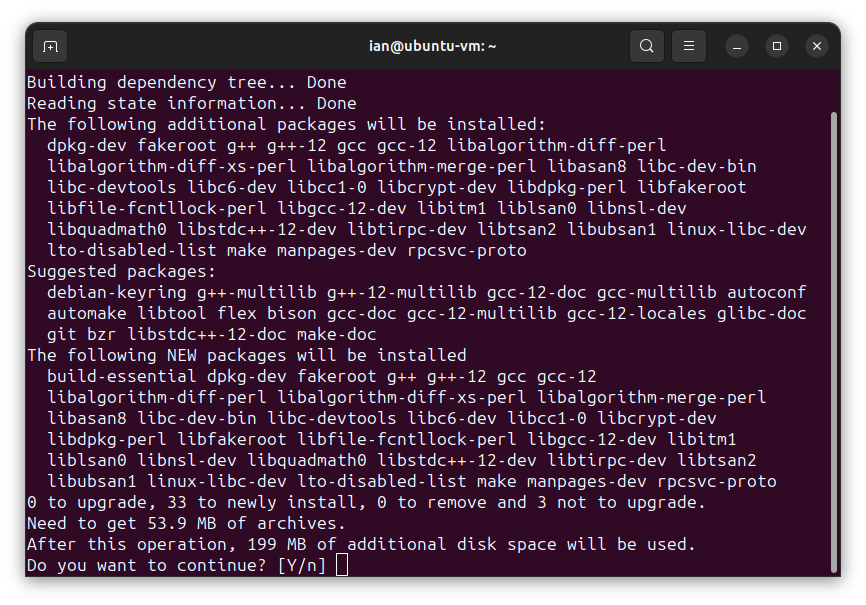Installing C++
As part of the programming module you study on the course, you will be tasked with using the C++ programming language to complete lab activities.
In this guide, you shall be taken through the journey of installing C++ for the Linux (Debian-based) operating system.
Downloading and Installing C++
By default, the Linux environment will not have the C++ compiler installed. Installing C++ is relatively straight
forward in Linux, and requires installing a package using the command-line interface (CLI). To install the C++ compiler,
you will need to install the build-essential package which can be achieved with the following command:
$ sudo apt install build-essential
When this command is entered in the CLI, you will be met with a question similar to the one shown in the screenshot in Figure 1.

This will ask whether you would like to install the packages that are listed in the CLI window. These are packages that
are a part of the build-essential package and are useful when developing applications on a Linux system. You may want
to review these packages, and if they are suitable you can install them by enter Y and pressing the Enter key.
This will begin the installation process of the relevant packages.
The packages listed in Figure 1 may be different to the list of packages that are present on your machine/system. These
are the packages that are required: g++, g++-multilib and make.
Checking the C++ Installation
To confirm that everything is working as expected, you will need to perform a quick check using the command-line
interface. To perform this check, open Terminal by pressing the key combination, Ctrl + Alt + T. This
will open the CLI. With the command-line interface open, you can type the command g++ -v and the C++ compiler should
be executed and return the current version number, shown in Figure 2.

Conclusion
That is the end of this guide on installing C++ and if you have followed all the necessary steps correctly, you should have a fully functional implementation of the C++ compiler which will enable you to complete any necessary C++ programming-based activities and assignments you will participate with on this course.
Mistakes or Problems?
If you have spotted any errors or issues within this tutorial, you can e-mail Dr Ian Cornelius. Ensure to include in your message a description of the error/issue and a possible resolution. Also do not forget to include a URL to the page with the issue/error.